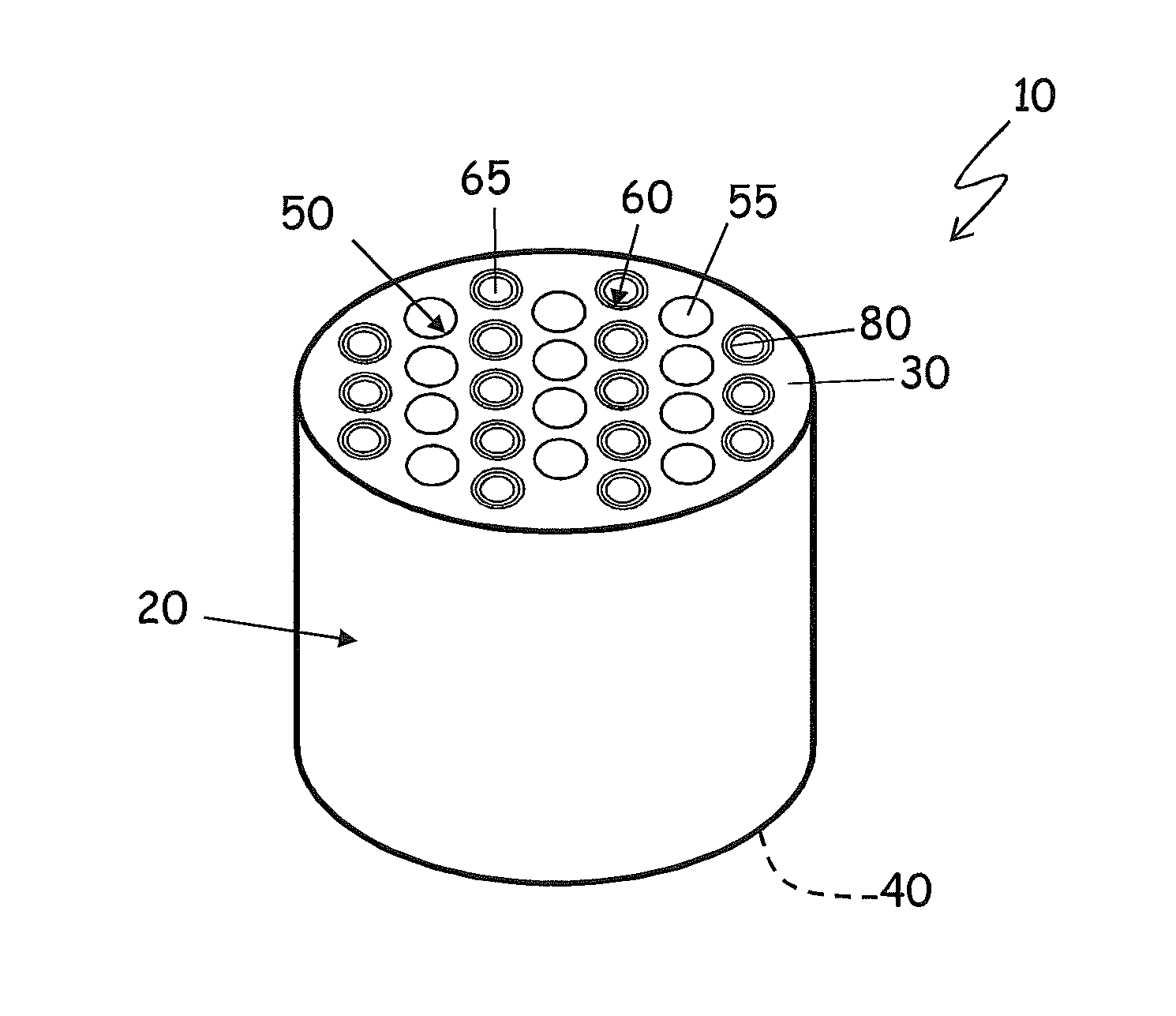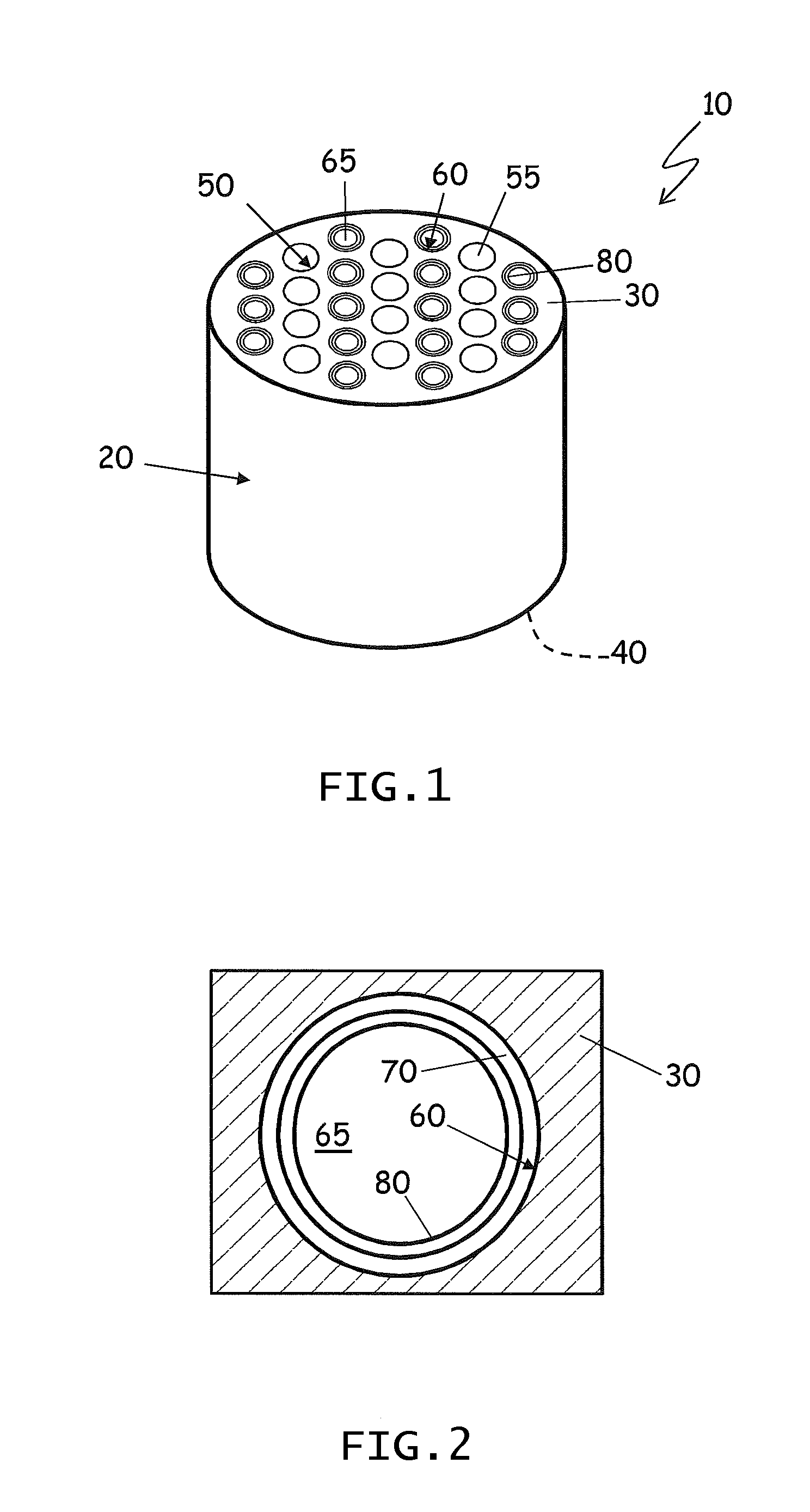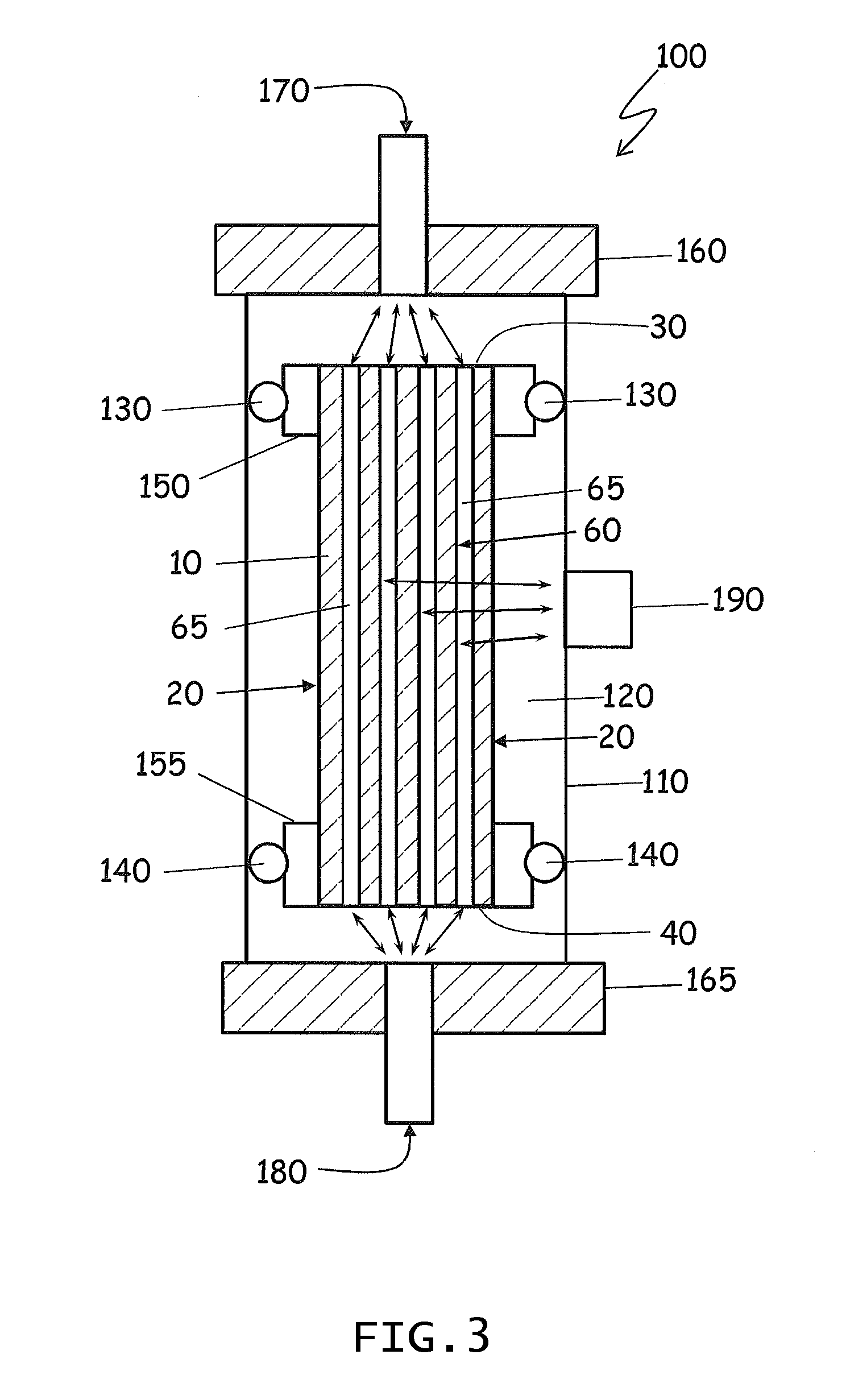Methods for preparing polymer membranes on porous supports
a technology of pervaporation membrane and porous support, which is applied in the direction of membranes, distillation, coatings, etc., can solve the problems of difficult application of optimal permeable polymeric membrane to highly porous support, and commercially available polymeric materials are typically unsuitable for use as pervaporation membrane materials
- Summary
- Abstract
- Description
- Claims
- Application Information
AI Technical Summary
Benefits of technology
Problems solved by technology
Method used
Image
Examples
example 1
Preparation of Pre-Polymer Emulsion Solution
[0051]For use in an emulsion deposition, a pre-polymer coating solution was prepared. A polymer precursor solution was prepared that contained 25 wt. % of DENO / D400 oligomers dissolved in toluene. Then, 8 g of the polymer precursor solution was combined with 10 g of aqueous 10 wt % sodium dodecyl sulfate (SDS) solution. The mixture was shaken and vortexed to form a white, viscous paste, then the mixture was diluted with 182 g of deionized water, resulting in 200 mL of a pre-polymer coating solution that contained 0.5 wt. % SDS and 4 wt. % organic phase. A magnetic stir bar was added, and the emulsion was stirred vigorously for 3 to 16 hours before being used to coat a porous support.
example 2
Effect of Surfactant Content on Emulsion-Coated Polymer Membranes
[0052]Polymer membranes of DENO / D400 were prepared on porous supports in the coating vessel of FIG. 3 using emulsions prepared as described in Example 1. Specifically, emulsions containing 0.1 wt. % SDS, 0.5 wt. % SDS, and 5.0 wt. % SDS were tested to evaluate the effect of surfactant content in the emulsion on the quality of the polymer membrane. The emulsion coatings were applied to two precoated porous supports with average pore sizes of 0.2 μm and 0.01 μm. The average pore sizes of 0.01 μm and 0.2 μm were attained by slip coating precoat layers of different particle sizes onto a bulk as-received porous support.
[0053]The membrane channels of the porous supports were filled from top to bottom with the emulsion, and the emulsion was allowed to filter through the porous support. The porous support was allowed to dry by letting it sit at room temperature (25° C.) for 16 hours, after which a vacuum test was performed to ...
example 3
Slip Coated Polymer Membranes
[0056]Additional DENO / D400 polymer membranes were applied by slip coating to porous supports having average pore sizes of 0.2 μm and 0.01 μm. Channels of the porous supports were filled from the bottom up with the pre-polymer coating solution coating slip (12.5 wt. % DENO / D400 in toluene). A backpressure of about 60 kPa was applied from the outer walls into the channels. The coating slip was retained in the channels for 2 minutes and then drained. A brief vacuum (10 seconds) was applied to expel excess coating solution from the channels. The porous support was removed from the coating vessel, allowed to dry overnight (16 hr) and cured at 150° C. (4-18 hours, in nitrogen). The porous supports were checked for mass gain and vacuum-tightness of the polymer membrane.
PUM
| Property | Measurement | Unit |
|---|---|---|
| pore size | aaaaa | aaaaa |
| pore size | aaaaa | aaaaa |
| porosities | aaaaa | aaaaa |
Abstract
Description
Claims
Application Information
 Login to View More
Login to View More - R&D
- Intellectual Property
- Life Sciences
- Materials
- Tech Scout
- Unparalleled Data Quality
- Higher Quality Content
- 60% Fewer Hallucinations
Browse by: Latest US Patents, China's latest patents, Technical Efficacy Thesaurus, Application Domain, Technology Topic, Popular Technical Reports.
© 2025 PatSnap. All rights reserved.Legal|Privacy policy|Modern Slavery Act Transparency Statement|Sitemap|About US| Contact US: help@patsnap.com



